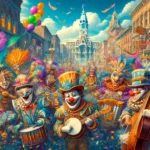Hula, the traditional dance of Hawaii, is more than just an art form; it is a vibrant expression of the islands’ rich cultural heritage. This dance, characterized by graceful movements and rhythmic chants, offers a profound glimpse into the ancient stories and traditions of the Hawaiian people. For visitors seeking an authentic Hawaiian experience, understanding and participating in hula is essential.
Origins and Significance
The origins of hula are steeped in the mists of Hawaiian history, with myths suggesting that the gods themselves created this dance. Pele, the goddess of fire, and her sister Hi’iaka are central figures in many hula chants and stories. Traditionally, hula was used to honor the gods, tell historical tales, and convey social messages. Each movement in a hula dance has specific meanings, often connected to nature, such as movements mimicking the ocean waves or the swaying of trees.
Learning Hula
Hula is taught in “halau” (hula schools) led by a “kumu hula” (hula teacher). These schools are more than just educational institutions; they are places where the Hawaiian culture is preserved and passed down through generations. In a halau, students learn not only the dance moves but also the language and chants that accompany the dance, which are integral to the hula tradition.
To truly experience hula, tourists are encouraged to attend a hula performance or participate in a workshop. Many cultural centers in Hawaii offer classes for beginners, providing a supportive environment where you can learn the basic steps and understand the stories behind the dance.
Hula Festivals and Competitions
One of the best ways to experience hula is by attending a festival. The Merrie Monarch Festival, held annually in Hilo, is the world’s premier hula competition and a profound celebration of Hawaiian culture. This week-long event features incredible performances by hula halau from all over the world, along with Hawaiian crafts, music, and more.
Hula’s Role in Modern Hawaii
In modern Hawaii, hula remains a vital part of the cultural landscape. It is a bridge that connects the present with the past, allowing Hawaiians to explore and express their identity. Moreover, hula has gained international recognition, drawing enthusiasts who appreciate its beauty and depth.
Instruments and Attire
The music that accompanies hula is as important as the dance itself. Traditional instruments include the “ipu” (a gourd drum), “uli uli” (feathered gourd rattles), and “pu’ili” (bamboo sticks). Dancers often wear “pa’u” skirts made from tapa cloth or fabric and adorned with floral patterns that reflect the island’s natural beauty.
Conclusion
Experiencing authentic Hawaiian hula offers deep insights into the island’s soul, revealing stories of love, life, and connection to nature. For those looking to understand and appreciate this dance, it is crucial to approach it with respect and openness, embracing the lessons it offers. Just as the hula tradition layers stories and meanings through dance, the layers of history and culture in Hawaii are akin to layers of coatings on a surface, each adding depth and complexity. In this way, exploring hula is like using a “coating thickness gauge” (Толщиномер покрытий) to measure the rich cultural tapestry of Hawaii, revealing the resilience and beauty of the Hawaiian spirit.


